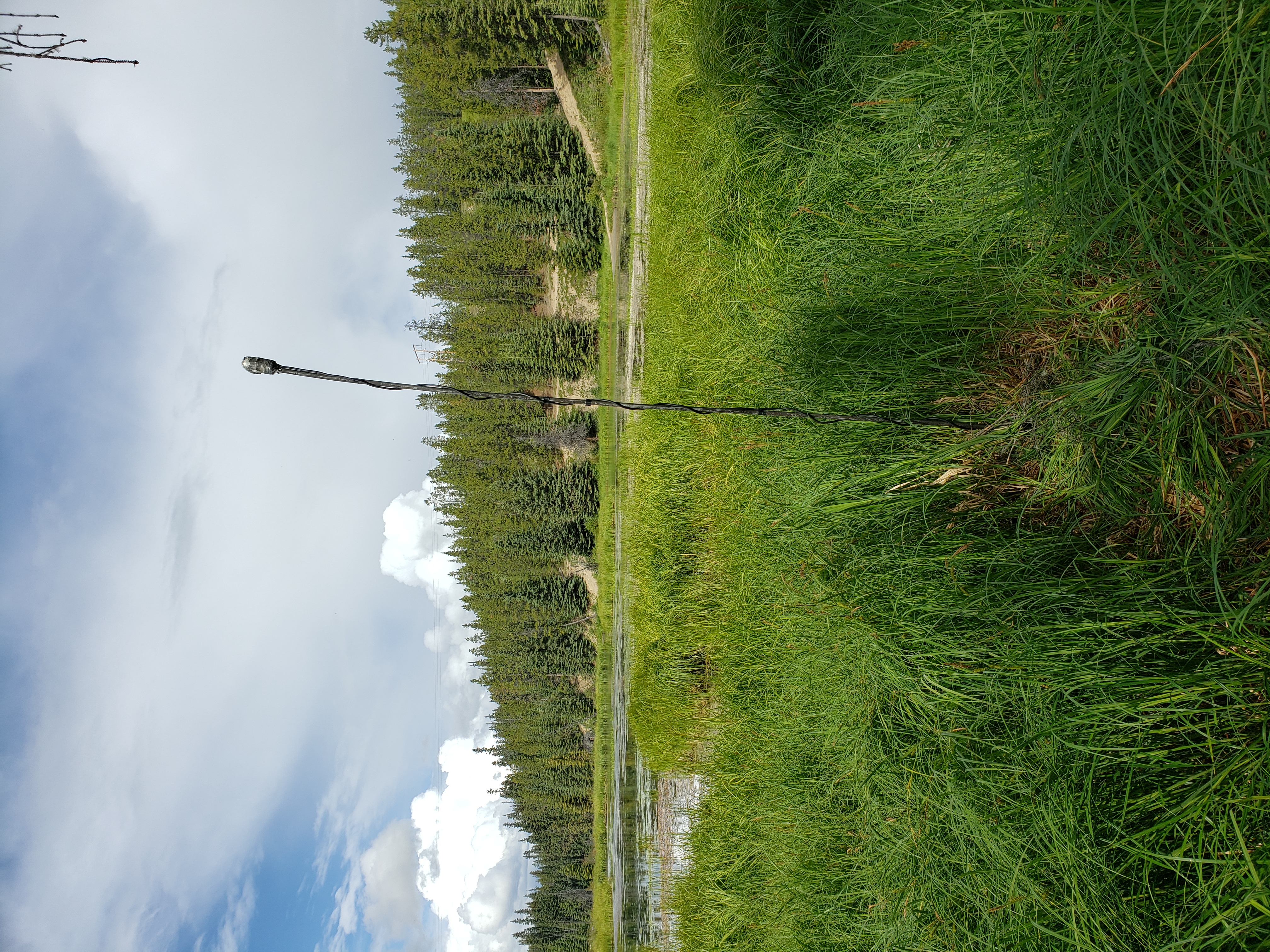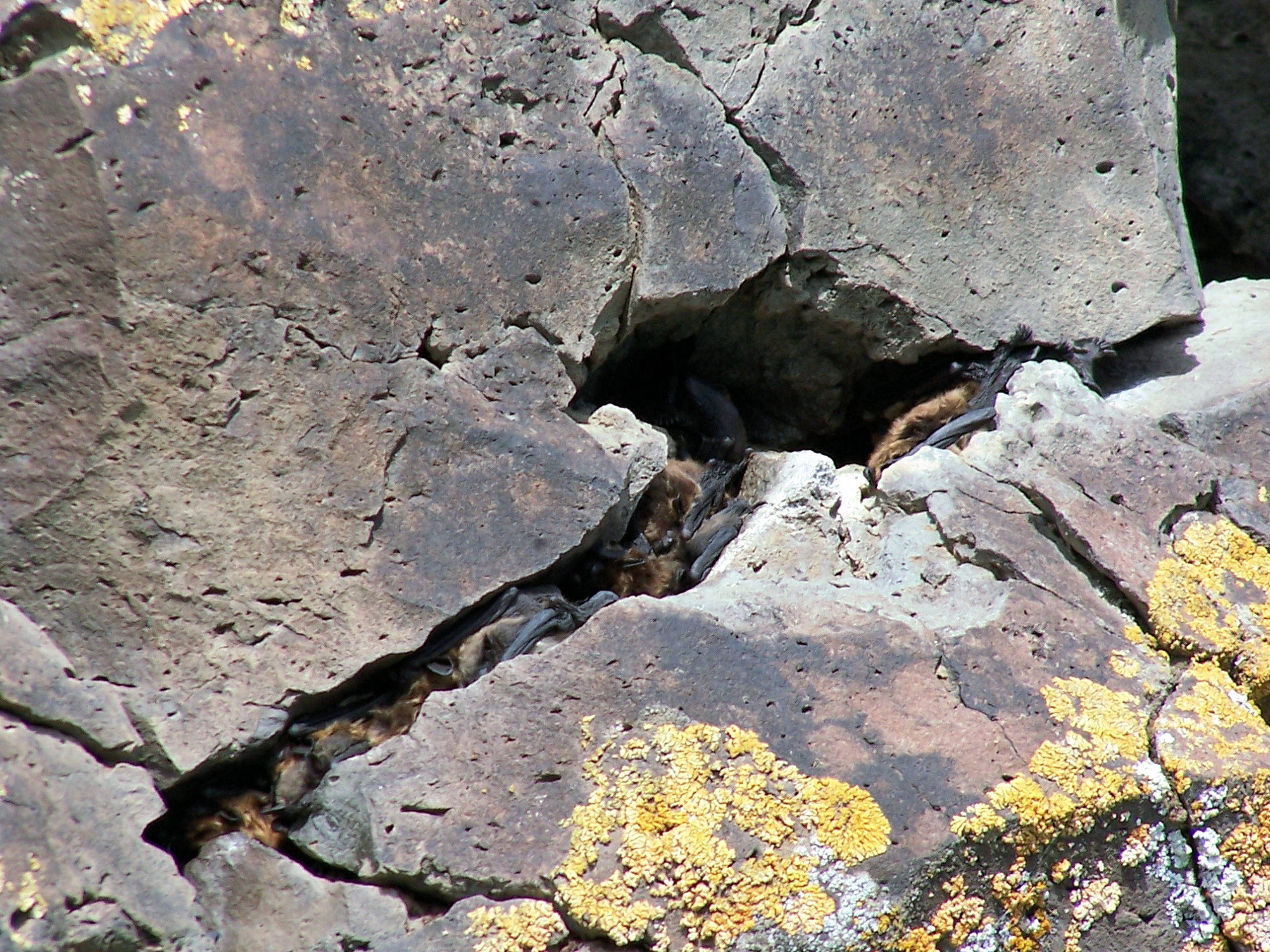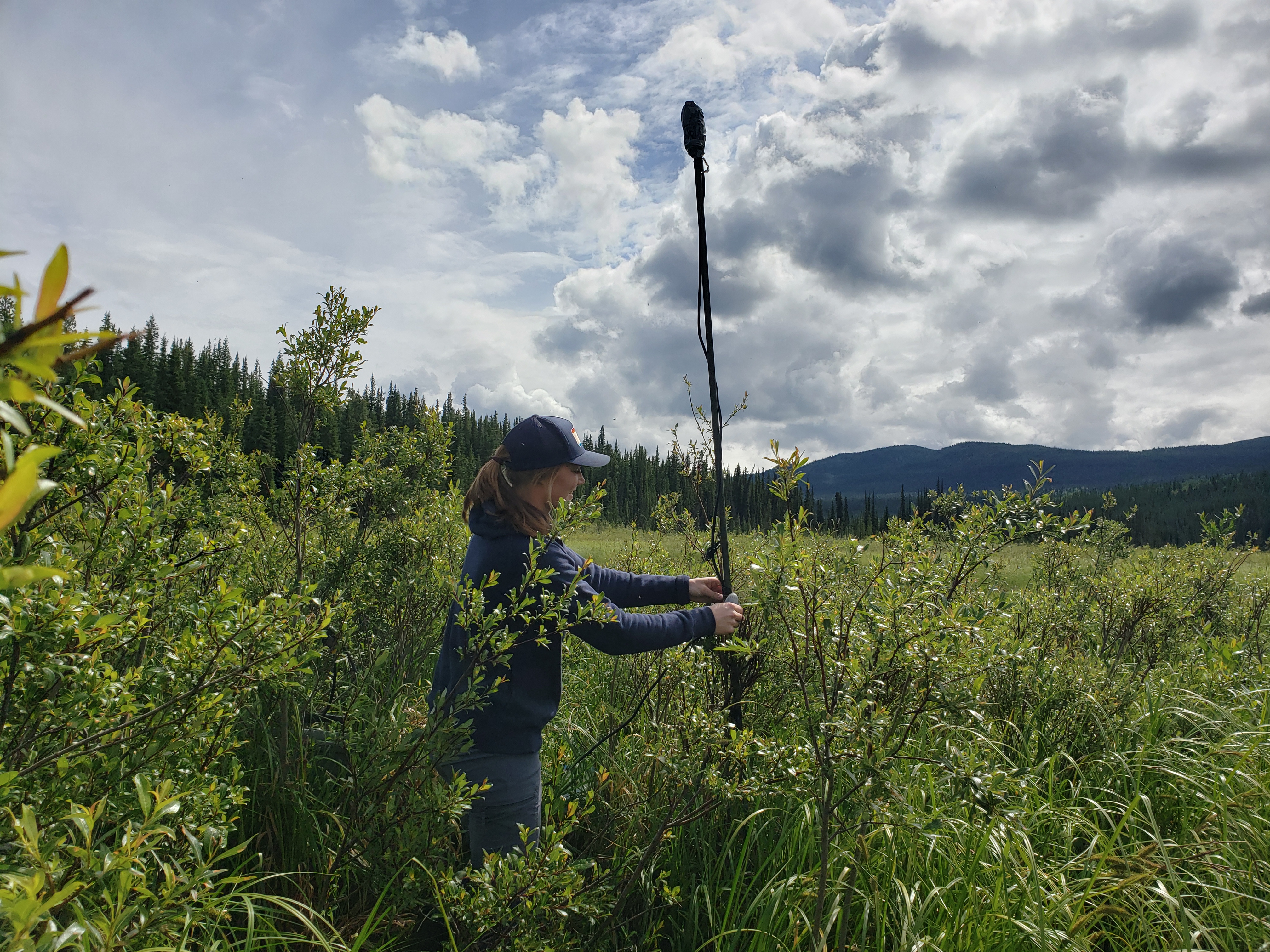
A Guide to Yukon Bats for Endangered Species Day
Written by Maegan McCaw, Conservation Coordinator
Header Image by Maegan McCaw
Friday, May 21st has been designated as Endangered Species Day. This is an important day to acknowledge the thousands of species around the world whose populations are in decline, and the efforts of those working to conserve and protect these species.
For this year’s Endangered Species Day, I’m going to take you on a deep dive into the world of bats.
Eight bat species have been recorded in the Yukon, including the Little Brown Myotis and the Northern Myotis, both live captured, and the Long-eared Myotis, Yuma Myotis, Long-legged Myotis, Silver-haired Bat, Eastern Red Bat and Hoary Bat, confidently identified from echolocation calls. All of these species, aside from the Little Brown Myotis, have been found only in southern Yukon and may be restricted to local areas in this region. To read more about Yukon bats, check out this pamphlet by Yukon Wildlife Viewing.
I’ve been fortunate to learn about bats through my work at McIntyre Creek and the opportunity to collaborate with local researchers. Last summer I used bat detectors to record the echolocation calls of bats at McIntyre Creek. These surveys only lasted for a few nights at a handful of sites, and to my amazement, they resulted in thousands of recordings of bat calls each night. I learned this means there is likely a maternal colony in the area. Julie Thomas, a Yukon Government biologist, and Brian Slough, an independent researcher, helped analyze the files and determined many of the calls were feeding calls, and the Little Brown Myotis and potentially the Long-legged Myotis were recorded. The only other acoustic recordings of Long-legged Myotis in the Yukon were at Wolf Creek, just south of Whitehorse, Carmacks, Teslin and Destruction Bay.
Canada has 622 species listed under the Species at Risk Act (SARA). Species listed here are nationally recognized to be locally extinct, endangered, threatened or of special concern. Of these 622, 91 are found in the Yukon. CPAWS and others have been advocating for the establishment of Territory-specific legislation to properly protect and manage species at risk for years to fill in the gaps that SARA leaves.
Across Canada, the Little Brown Myotis and the Northern Myotis are both listed as endangered due to white nose syndrome. This fungal disease has devastated bat populations in eastern Canada, leading to a 94% overall decline in hibernating populations in Nova Scotia, New Brunswick, Ontario and Quebec. It continues to advance northward and westward without containment. Local bat researchers are bracing themselves for the day that white nose syndrome is discovered in a Yukon bat.
Other issues threaten bats across Canada. Bats are sensitive to human disturbance during hibernation; each instance of disturbance is energetically costly to a hibernating bat, as their metabolic rate goes up and they are left to determine if there is an immediate threat or not. Enough disturbances can lead to starvation. Wind turbines can also be deadly to bats, especially to species that undergo long distance migrations. Loss of habitat or change to forest structure is another threat, as well as chemical contamination. Bat’s diet of insects makes them vulnerable to the effects of pesticides, though the impacts and extent of negative effects from pesticides are unknown.
Industrial projects, such as quarrying for the Site C dam in B.C., pose serious threats. The chosen quarry site at Portage Mountain for the Site C project encroaches on priceless bat hibernation sites and summer habitat for eight different species of bats. Bats require warm, humid areas to hibernate in the winter – a rare find in northern landscapes. Such sites usually have a long history of use by bats, and there might not be other suitable habitats available across the landscape. Important hibernation sites paired with summer roosting and feeding areas, such as wetlands (one of which was backfilled for the Site C quarrying project), are even more rare. In the case of this quarrying project, B.C. Hydro prioritized industrial interests and the convenience of the Portage Mountain site over its value as a critical habitat feature.
“So, what?”, you might think. How important are bats, really? The answer is, bats bring a number of benefits to our lives, but beyond that, they have their own intrinsic value that must be appreciated. It should also come as no surprise that the health of all living things and the land are connected in some way – also known as One Health – so the health of bats and their habitats have an effect on our health as well.
Bats provide an important ecosystem service by helping to manage insect populations, including agricultural and forestry insect pests, and some bat species are important pollinators. They are also a sign of ecosystem health. Multiple cases of One Health issues have arisen from humans interrupting the natural system and causing wildlife, such as bats, to relocate, sometimes leading to the transmission of disease. Sadly, myths and exaggerated messages of bats carrying disease have led to a fear of bats, and in some cases people have even exterminated entire colonies.
Bats are intelligent, social, long-lived creatures. The little brown myotis can live into their 30s! They also have a slow birth rate, and females raise one pup every one to two years. We still have a lot to learn about bats, especially populations in the Yukon, but they – and their habitats – are clearly worth working to conserve.
There is no doubt that more research needs to be done on Yukon bats to fill broad knowledge gaps. Canada’s bat populations are faced with serious threats, and time is of the essence. Thankfully, a handful of biologists, researchers, and bat enthusiasts including: Yukon Government biologists Tom Jung, Piia Kukka, and Julie Thomas; independent researcher Brian Slough; Wildlife Conservation Society Scientist Cori Lausen, and; University of Calgary Professor Robert Barclay, among others, actively continue to contribute to the body of knowledge about Yukon bats. Their work is immensely important, especially as white nose syndrome makes its way closer to the territory. Filling knowledge gaps about Yukon bats will allow us to identify critical habitat, monitor species and populations, and address threats.
This summer CPAWS is partnering with several researchers and biologists to study bats at McIntyre Creek and Wolf Creek. We hope to learn how bats use specific features and characteristics along these two urban creeks near Whitehorse. This work may also give more insight into which species of bats are present along these urban creek systems.
If you want to participate in projects like this or are interested in learning more about other local species, come join us out at McIntyre Creek this summer. You can also contribute to bat conservation efforts in other ways. Reporting potential maternal roosts to Yukon Government – indicated by large quantities of guano at the base of a roost, or seeing a group of bats entering/leaving a roost site at night – is an important step. You can also install a bat house, providing a place for bats to roost on your property (and enjoy the added benefit of fewer mosquitos around your yard). Contact Yukon Wildlife Viewing for more information on their bat house program. Finally, you can teach your friends and family about the importance of bats, and dispel outdated myths that may cause them to unnecessarily fear bats. Just like other things in nature, a little respect for their life history and important habitats goes a long way, and in the long run, this can lead to mutual benefits. Let’s keep bats around for the long haul.


